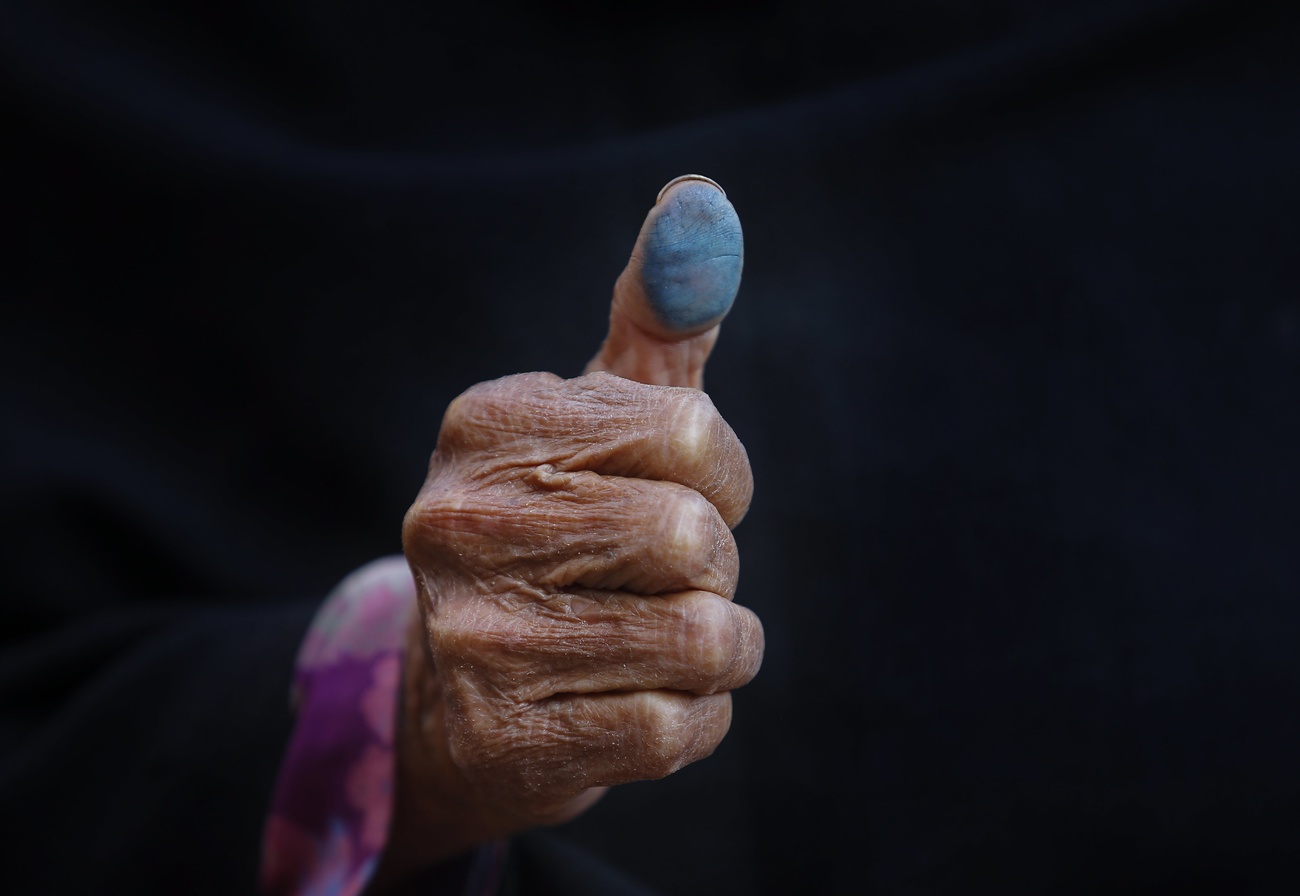
Who writes the code? AI integration in a post-aid world
With humanitarian aid budgets under more pressure than ever before, artificial intelligence (AI) can help optimise limited resources. However, the adoption of AI comes with its own set of risks.
The US government’s recent decision to shutter the US Agency for International Development (USAID) has led to massive funding gaps in aid programmes across the globe. In light of these pressing challenges, it is crucial to explore innovative technical solutions to mitigate their effects. Artificial Intelligence (AI) could be one of these solutions.
AI can manage limited aid budgets more effectively by accurately predicting humanitarian crises before they occur, rapidly analysing humanitarian needs on the ground, and improving the speed and logistics of aid delivery. However, the adoption of AI comes with its own set of risks. How technology companies, governments, and the humanitarian sector address these risks will be crucial for the future of AI use in aid delivery.

More
Our weekly newsletter on foreign affairs
In 2024, USAID provided more than 40%External link of the UN Refugee Agency’s $4.8 billion donor funding. Its sudden withdrawal has left refugee camps, humanitarian aid in conflict zones, and rapid deployments into disaster-affected areas dangerously underfunded.
According to the New York TimesExternal link, the shutdown has also affected global health programmes, jeopardising access to HIV treatment and services for over 20 million people, including 500,000 children. As a result, the World Health Organization (WHO) reported treatment suspensions in 50 countries.
Driven by shifting economic priorities and the decision to increase defense spending, countries like Germany, France, and the UK have cut their international assistance budgetsExternal link. Similarly, Switzerland’s parliament reduced spending on international development, placing many programs run by the Swiss Agency for Development and Cooperation (SDC) at risk of closure.
>>Read this series of articles on how Switzerland, like other rich nations, is grappling with a shrinking foreign aid budget for the foreseeable future:

More
How Switzerland is managing foreign aid at a time of global upheaval
In response to these cuts, AI could help improve efficiency and optimise resource allocation in the humanitarian sector. Just as it is transforming industries by enhancing productivity at scale, it holds the potential to streamline aid deliveryExternal link and strengthen human rights monitoring.
A notable example of AI’s transformative potential is the Famine Action MechanismExternal link (FAM), which has been spearheaded by the World Bank in collaboration with Microsoft, Google and Amazon Web Services (AWS). The initiative was launched in 2018 and leverages AI algorithms to provide early warnings for food shortages, which enable proactive aid interventions to mitigate humanitarian crises.
AI is also used in human rights monitoring initiatives. For example, in 2021, the Danish Refugee Council (DRC) employed AI to predict displacement trends by analysing data on displacement patternsExternal link from previous years as well as data on past conflicts, climate patterns, and human rights implementations
Deploying AI in critical decision-making scenarios that impact human lives does not come without risk. Beyond concerns about privacy and model transparency, one of the most significant risks is the inherent bias of algorithms. Although these algorithms are continuously tested and updated to mitigate biases, using AI in environments involving groups that are marginalised or in vulnerable situations, such as women or ethnic minorities, requires extreme caution to prevent unintended harm. For example, persistent neglect in historical training data could result in the quantitative misallocation of disaster relief to rural Indigenous communities.
Biases in AI stem not only from the data used to train the models but also from the design and coding choices made by their creators, which can embed distinct norms, values, and perspectives into the systems. Like many other industries, AI is a field of geopolitical competition. Its development is largely dominated by corporations and entities from industrially developed countries. This dominanceExternal link poses significant challenges for the Global South, which often lacks the infrastructure, resources, and expertise to create independent AI solutions. Most importantly these countries struggle to produce high-quality representative dataExternal link which is necessary to adequately train AI algorithms in the first place.
The dominance of foreign AI companies and entities risks imposing norms, values, and perspectives that may overlook or fail to respect local cultures and regional distinctions. Companies from liberal democracies, particularly those influenced by what are commonly known as “Western values”, often implicitly embed WEIRDExternal link (Western, Educated, Industrialized, Rich, and Democratic) frameworks into the AI systems they develop. By contrast, Chinese companies often design AI systems that reflect state-centric priorities and interpretations of rights, governance, and international relations.
>>Read this article on how Switzerland is looking with interest at China as it aims to become a bridge between East and West in the global AI race:

More
Why China’s approach to AI intrigues Switzerland
The humanitarian aid sector is particularly vulnerable to the adoption of AI solutions that reinforce global power imbalances. The halt of USAID has vividly shown how dependent the current humanitarian setup is on the financial support of the US and other donor countries. This financial dependency has often been used to promote the political priorities and cultural norms of donor nations in the Global South.
As Western nations reduce their humanitarian aid, China and other global playersExternal link could seize the opportunity to broaden their presence in the developing regions. AI could become a useful tool in China’s effort to expand its influence. In addition to providing traditional humanitarian aid, the country could shape policies in the Global South by exporting its AI solutions.
To escape this geopolitical dynamic, AI models will likely have to be designed with cultural sensitivity, embedded with local values, norms, and moral frameworks, and created in the Global South with local knowledge and talent. AI solutions that overlook regional contexts risk reinforcing the dependency dynamics of past humanitarian aid practices.
One successful example is Lelapa AIExternal link, a South African AI company that developed the continent’s first multilingual small language model called InkubaLM. Lelapa promotes the idea that African languages carry cultural and regional contexts, an aspect that generic AI often fails to convey.
Tech companies everywhere are beginning to recognise this need. In February 2025, Microsoft for example, embarked on an AI tour in Lagos, NigeriaExternal link, promoting its commitment to advancing digital skills. The initiative aims to equip one million Nigerians with AI expertise by 2026, to allow them to integrate AI into their businesses and develop their own AI capabilities. Investing in local capacities and locally built AI models is a smart industrial policy for tech companies. Locally built systems are more easily integrated into local markets and better reflect regional norms, values, and perspectives.
Collaboration between AI engineers and human rights professionals is key to ensuring context-sensitive solutions. Initiatives like ETH Zurich’s collaboration with the ICRCExternal link, the ITU’s AI Skills CoalitionExternal link, and the Geneva Human Rights Platform’s initiativeExternal link on digital human rights tracking tools, foster interdisciplinary approaches to harness AI for humanitarian and rights-based applications. The AI for Good Global SummitExternal link in July 2025 brings together key stakeholders to ensure that AI can tackle inequality and provide solutions for human rights monitoringExternal link.
More

In compliance with the JTI standards
More: SWI swissinfo.ch certified by the Journalism Trust Initiative





































You can find an overview of ongoing debates with our journalists here . Please join us!
If you want to start a conversation about a topic raised in this article or want to report factual errors, email us at english@swissinfo.ch.